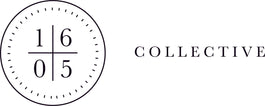Maciej Markowicz | Interview
“Photography has the ability to divide human life into a series of moments; each of them has the value of complete existence.” Eadweard Muybridge
Maciej Markowicz is an artist with a boat that he turned into a Camera Obscura in 2017. Living on a floating surface while travelling around Europe, Markowicz doesn’t waste any minute. He organises workshops for kids and adults and fascinates everyone with the magic of creating 8 seconds paintings with light and motion on colour photographic paper.
His artwork is included in the collection of the French Museum of Photography, the German Bundestag Art Collection, Rother's Mills, the Institute for Arts and Culture, Poland, and many private collections in the USA, UK, and Europe.

About the creation of Camera Obscura:
It was my dream to have a boat since 2012 and then I finally built the vehicle in 2017. Amsterdam was the first place where I put the boat into the world. It was during the UNSEEN. Since 2017 I work only on the boat, but it has been only one of many of my transformed photographic devices with help of which, I expose light directly on colourful graphic paper.
After Amsterdam, I went with the boat to the Paris Photo Event, which was part of Bienalle Hamburg. I was travelling around Europe in a boat together with another artist, who had his own boat with a totally different concept: Claudius Schulze. Since then, I was living the dream and realising how important is to share this idea of special image-making with people. This initial journey from Amsterdam to Paris, from Paris to Hamburg and from Hamburg to Berlin provided such an incredible experience not only for me but also for the audience that came to visit my boat. And doesn’t matter who I received there: an art lover or a 5-year-old kid, everyone was feeling super relaxed, forgetting about anything else, focusing only on the here and now. I guess it’s because the idea of the power of light in the dark space leaves you in a hypnotised state. And the kids go crazy because they have no idea of what is going on with all the colours and the lights. For them, it is something completely different, something very alive, not the usual world of digital gadgets that they are used to.
Whenever I go now, I always try to organise a workshop for children, it gives me so much energy and, lots of inspiration. Finally, they discover, that you don't have to have a smartphone to take a picture, you can also make your handmade camera obscura out of a shoebox, for instance.

The initial inspiration
I started my studies in 2007 and by that time I was already interested in analogue photography. Growing up in the South of Poland, I had lots of friends interested in photography. We would just set up our little dark room in the basement. Everything is very low profile, nothing high-tech as you can imagine. And we would spend hours and hours there, projecting the images on the wall and developing the negatives of our experimental projects. It was the very beginning of my exploration of analogue photography and one of the most exciting times of my life.
And in 2007, when I finally started my studies in London, together with the other students, we went on a field trip to Lacock Abbey in South-West England. There, in an exhibition of William Henry Fox Talbot, who was an English scientist, inventor, and photography pioneer (he invented the salted paper and calotype processes), I discovered how in the early 18th century, the normal paper was transformed into the photosensitive. I took a lot of pictures and made plenty of notes of Fox Talbot's drawings, so when I came home, I had a goal to recreate the process initiated by the master. I thought that to understand photography I have to understand how it was born.
And then I spend three months immersed in the process of creating collotypes. I turned my apartment into one big darkroom. After three months, I came up with a mini-series of collotypes and I was fascinated by how this work was born. By that time I was already exploring how different objects, containers, and rooms can be turned into cameras. During months of research, my whole darkroom was also my camera. It was the time when I fell in love with the power of light.

Five years later, in 2012 I finally discovered what was missing in my process and what I was looking for. I was living in New York during that year and one day when I was in the metro, the light in the train went off and light from the tunnel went in and allowed for the glittering images to enter that dark space and be projected on the walls of the wagon. This was my “eureka moment” when I realised that I have to use the colour paper with my camera obscura to achieve this mysterious, shiny result in a kaleidoscope of different colours and lights.
My current goal is to continue sharing my work and my artistic approach with as many people as possible. As I have mentioned before, it is so inspiring for both sides. I want to continue working with children, especially children that don’t have easy access to workshops in photography or other types of art.
I think that investing in future generations is the most important achievement you can aim for. And as I have mentioned before, the curiosity of children and their openness to the subject is beyond everything. Currently, I am organising a lot of workshops for children and specifically for refugee children from Ukraine. The kids that went through such tough times, really deserve these moments of pure magic that can brighten their days.

